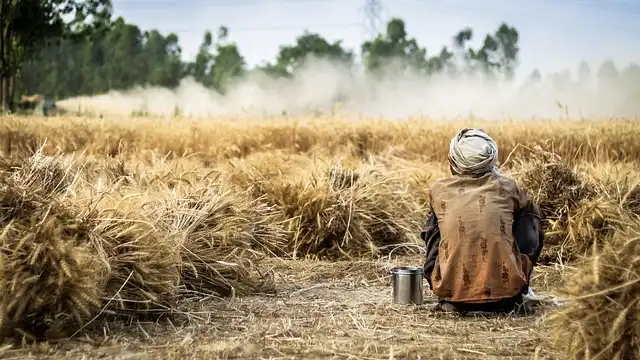Over the past few decades, it has become obvious that climate change, and consequent extreme weather events, can wreak havoc on crop yields. Concerningly, there is a large disparity in agricultural vulnerability between developed and developing countries. In a new study, researchers have looked at major food grains in India to understand the long- and short-term effects of climate change on crop yields.
“Most studies that measure the effects of climate change are looking at year-to-year changes, which are representative of variations in weather and not climate,” said Madhu Khanna (CABBI), a professor of agriculture and consumer economics. “We used data across 60 years to examine how deviations in weather from long-term averages affect the yields of three major cereal crops: rice, maize, and wheat.”
Changes in weather are short term, like a hot day with a sudden thunderstorm. However, such variations may be distinct from long-term differences, which are the hallmark of climate change. “We were looking to see if the effect of short-term deviations in extreme temperature and precipitation are significant when compared to their long-term averages and if their effects are absent in the long term as farmers adapt to climate change,” Khanna said.
The researchers used quantile regression models to determine if farmers were adapting to the long-term changes in climate. To do so, they used 60-year data sets on temperature, precipitation, the length of the growing season, and crop yield to create different models for short-term and long-term responses of crops.
According to their analysis, if differences in temperature, for example, have no impact in either model, there have been no adaptations. On the other hand, if the short-term impact is worse, it means that the farmers have been able to adapt and smooth out the effects.
“We found that the farmers were able to adapt to changes in temperature for rice and maize but not wheat. Increased precipitation enhanced rice yield, but adversely affected wheat and maize yields,” Khanna said. “We also found that farmers are customizing their strategies across different regions and crops. For example, heat-prone districts fared better to higher temperatures compared to districts in colder regions.”
“The impacts are higher at the lower tail of the distribution, but are lower at the upper tail of the distribution,” said Surender Kumar, a professor of economics at the University of Delhi, India. Farmers who worked in areas that were less productive, and therefore at the lower tail of distribution, differed in their response to those who worked in areas where the yields were higher—the former took more adaptation measures due to higher impacts.
“Higher productive regions have better irrigation facilities and are less dependent on the monsoon, and so the difference between long-term and short-term impacts is negligible,” Kumar said.
There are two ways by which the crops can adapt: the farmers can change their management practices or the varieties themselves are hardier. Although this study cannot distinguish between these possibilities, it suggests that action can be taken to improve seed varieties and educate farmers on how they can adapt to changing climate.
“This study is a part of our overall effort to build understanding across different countries. In the past we did a similar study in the US and now we’re doing it for India. It’s interesting that the results of this study are telling us that in both countries, although there is a negative impact of climate, the crops are adapting,” Khanna said.
“However, these effects differ across crops and across the type of effects they are adapting to. We need to take a holistic view of all the various ways in which changing climate effects yield, which is obviously a very challenging and complex problem, and understand that focusing on particular dimensions of climate change and adapting crops may not be sufficient.”
The study “Distributional heterogeneity in climate change impacts and adaptation: Evidence from Indian agriculture” was published in Agricultural Economics.
Read the paper: Agricultural Economics
Article source: University of Illinois at Urbana-Champaign
Author: Ananya Sen
Image: A farmer sits with his back turned to us in a partially harvested wheat field. Credit: Aamir Mohd Khan / Pixabay






